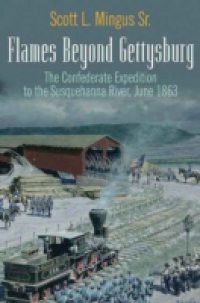The Gettysburg Campaign has been examined in minute detail from nearly every aspect but one; the key role played by Richard Ewell's Second Corps during the final days in June. Scott Mingus's Flames Beyond Gettysburg: The Confederate Expedition to the Susquehanna River, June 1863 is the first in-depth study of these crucial summer days that not only shaped the course of the Gettysburg Campaign, but altered the course of our nation's history.In two powerful columns, Ewell's Corps swept toward the strategically important Susquehanna River and the Pennsylvania capital looming beyond. Fear coursed through the local populace while Washington and Harrisburg scrambled to meet the threat. One of Ewell's columns included a veteran division under Jubal Early, whose objectives included the capture and ransom of towns and the destruction of railroad bridges and the Hanover Junction rail yard. Early's most vital mission was the seizure of the Columbia Bridge, which spanned the Susquehanna River between Wrightsville and Columbia. To capture the longest covered bridge in the world would allow Early's Division to cross into prosperous Lancaster County and move against the capital in Harrisburg from its relatively undefended rear. Along the way, one of Early's brigades under John Gordon occupied Gettysburg and spilled the first blood there days before the bloodiest battle ever fought on American soil began on July 1.Flames Beyond Gettysburg vividly narrates both sides of Ewell's drama-filled expedition, including key Southern decisions, the response of the Pennsylvania militiamen and civilians who opposed the Confederates, and the burning of the Columbia Bridge. Based upon extensive primary source material and featuring original maps by cartographer Steven Stanley, the fast-paced and gracefully written Flames Beyond Gettysburg is a welcomed and important addition to the Gettysburg literature.

